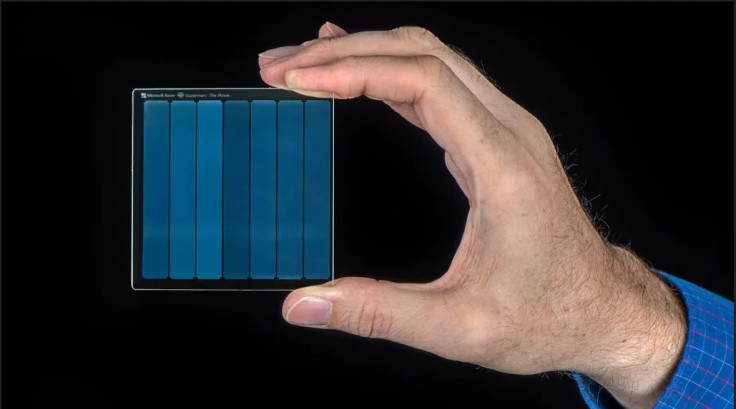
A Petabyte hard disk drive is quite unheard of for most users. For ease of comparison, one petabyte is equal to 1,024 terabytes. That's roughly one million gigabytes. One petabyte seems overkill at first glance but once we think about it, most videos nowadays are either in 1080p or 4K resolution. Games are even larger. Most AAA games take up at least 50GB of storage. These storage considerations are just for consumers that are let's say, power users.
When it comes to the server-side of things, things get crazier. Imagine Google's and Microsoft's server farms. Don't forget about various streaming sites' ever-growing library. Having multiple petabyte hard disk drives that occupy less space than traditional terabyte drives would really be advantageous, in terms of power consumption and physical storage requirements.
Read also: An Original Live-Action Resident Evil TV series is Reportedly in the Works
A petabyte hard disk drive: What the future holds
Eventually, glass could become a vital component in the world's first petabyte hard disk drive. This undertaking is obviously being done to satisfy our thirst for larger options when it comes to data storage. Even storage manufacturers worldwide have the same thoughts about the matter.
Five years from now, IDC foresees that we will produce 175 zettabytes (ZB) of data. Primarily, this is due to the increase in the demand for high resolution video and continuously growing IoT networks. We might even reach the astounding trillion terabyte mark by the end of this decade. Take note that one ZB is equal to one billion TB.
Microsoft's Project Silica was the first that brought optical data storage into the spotlight. Microsoft's researchers were able to pack 75.6TB of data onto a single piece of fused silica that is about the size of a 2.5-inch hard disk drive. If this doesn't sound like much of an achievement, today's largest hard disk drives top out at around 20TB and have sizes that are much larger than the standard 3.5-inch form factor.
Read also: Users Ask: What is Chromium? Is it Far Better than Google's Highly Reliable Chrome?
Seagate CTO John Morris has confirmed that its R&D department is currently working on using glass as a means for storing data. He goes further by saying, "The challenge is to develop systems that can read and write with reasonable throughput."
Hold your horses though. At its infancy, petabyte hard disk drives still have pressing issues to address first. Currently, a glass-based storage medium is read-only. We can't rewrite data onto it yet but it's perfect for Write-Once, Read-Many (WORM) scenarios.
Another caveat is there won't be any ISP that would offer a terabit connection in the next few decades. Therefore, backing up one of these petabyte hard disk drives to a cloud storage provider could really take long, like an entire lifetime perhaps.
Read also: OnePlus Entry-Level Clover Handset: It Keeps Getting Significantly Cheaper but Definitely Better









